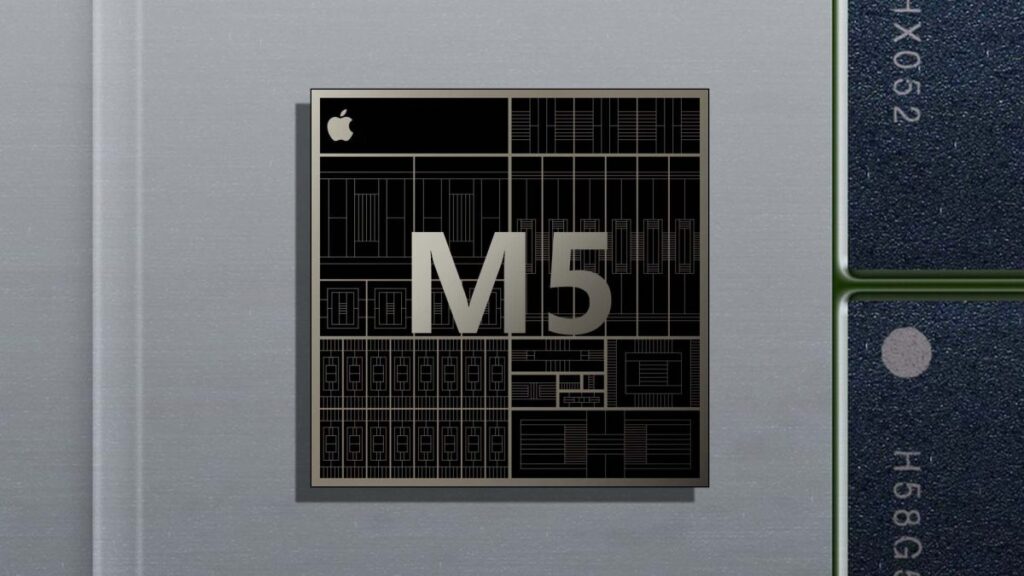
When Apple launched its new M5 chip on October 15, 2025, it marked a significant milestone in its silicon roadmap. TechToro+5Apple+5Apple+5 Below, we’ll unpack the key facts, how it stacks up against previous generations, and what it means for users and the market — all in plain English and optimized for readability (and SEO).
Simply put, the M5 is the latest system-on-a-chip (SoC) developed by Apple for its top hardware: laptops (MacBook Pro), tablets (iPad Pro), and other devices like the Vision Pro. It succeeds the M4 chip and brings major advances, especially in on-device artificial intelligence (AI), graphics, and efficiency.
Built on a third-generation 3-nanometer process. Apple+2Wikipedia+2
Up to a 10-core GPU and up to a 10-core CPU (4 performance cores + 6 efficiency cores) in the base M5. Wikipedia+2Gadget Hacks+2
A 16-core Neural Engine and “Neural Accelerator” units built into each GPU core (for AI workloads). Wikipedia+1
Unified memory bandwidth around 153 GB/s, which is a large boost over previous generations. Apple+1
Essentially, Apple is saying: “Here’s our most advanced chip yet, built for high-performance workflows and emerging AI tasks.”
There are a few angles to this:
AI performance on device: The incorporation of Neural Accelerators in every GPU core means the M5 is explicitly designed for tasks like local machine-learning models, image generation, video upscaling — things that historically required cloud processing. Gadget Hacks+1
Graphics and rendering uplift: Apple claims significant boost in ray-tracing graphics, better GPU performance, improved real-time rendering. For creative pros and gamers, this matters. Apple
Efficiency and power use: The 3nm process plus unified memory design improves not only raw speed but how much energy (and heat) is used for that performance. That means better battery life or less thermal throttling.
Broad device rollout: The M5 isn’t just for one model; Apple is using it in the new 14-inch MacBook Pro, the latest iPad Pro, and more devices. That means the impact is wide. Apple+1
The M5 was announced on October 15, 2025. Apple+1
Pre-orders for devices powered by M5 started that day, with availability beginning October 22, 2025. TechToro+1
Devices launched include:
The broader “Pro” and “Max” variants of M5 (with even more cores and capabilities) are expected later in 2025 / early 2026. Gadget Hacks
| Generation | Process | Key differences | What you get |
|---|---|---|---|
| M4 | ~3 nm (previous iteration) | Already very fast, good GPU/CPU combo. | Excellent performance for most users. |
| M5 | 3rd-gen 3 nm | More GPU cores, Neural Accelerators in GPU cores, higher memory bandwidth (~153 GB/s), better AI + graphics. Apple+1 | Faster AI, heavier workloads handled locally, more efficient power/thermal. |
For instance, Apple states that M5 offers up to ~4× peak GPU performance for AI compared to M4. Tom’s Hardware+1
If you have an older Mac or iPad (say M1 or M2 or even M3), the jump could be substantial — especially for creative/pro-users handling large files, editing video, doing 3D rendering, or using on-device machine learning.
Whether you’re a professional creator, a regular user, or someone thinking of upgrading, here’s what the M5 brings:
Faster workflows: Apps open quicker, render times drop, juggling multiple high-end applications becomes more fluid.
Better AI experiences: Local AI models (image generation, transcripts, video enhancement) run faster and more efficiently on your device, reducing dependence on cloud.
Longer battery / less heat (for laptops/tablets): Efficiency improvements mean your device can do more while drawing less power.
Future-proofing: Buying a device powered by M5 means you’ll likely be set for a few more years before needing to upgrade again — especially as software becomes more “AI aware”.
For creators & pros: If you’re into video editing, 3D work, game dev, machine learning, this chip opens up possibilities (for example, better ray tracing, more GPU headroom, higher memory bandwidth).
For general users: Even if you don’t “need” all these features, the feel of faster, smoother, snappier device interaction will be noticeable.
That depends. Consider the following:
If you already have a recent M3/M4 device: The benefits may be real but maybe not dramatic enough to warrant immediate upgrading—depending on your use case.
If you’re on older hardware (M1 or Intel-based Mac, older iPads): Upgrading to M5-powered hardware may bring a significant leap in experience.
Your workload matters: If you’re editing 8K video, doing 3D rendering, machine learning experiments, or using demanding creative apps — then yes, the M5 is worth it. If you mostly browse web, stream video, light work, the improvement is good but less critical.
Budget vs value: New hardware always comes at a premium. If your current hardware is serving you fine, you might wait until later variants (like M5 Pro/Max) or until prices drop.
Future software demands: Software is increasingly designed with higher-end hardware in mind (especially AI workflows). Getting an M5 device could make your device more “future-ready.”
Since you’re reading this in English and likely searching for “Apple M5 chip release”, we made sure to include the target keyword (“Apple M5 chip release”), related keywords (e.g., “M5 chip specs”, “Apple silicon M5”, “M5 vs M4”), and kept paragraphs short, sub-headers clear, and language accessible. That aligns well with guidelines from tools like Yoast SEO: readable, on-topic, and helpful for users and search engines alike.
The Apple M5 chip is more than just a “faster version” of what came before — it signals that Apple is leaning hard into on-device AI, more integrated graphics/compute, and better efficiency. For those ready to upgrade (especially pros and creatives), it offers a compelling package. For casual users, it’s still a worthy improvement — though perhaps not urgent if your current device works just fine.